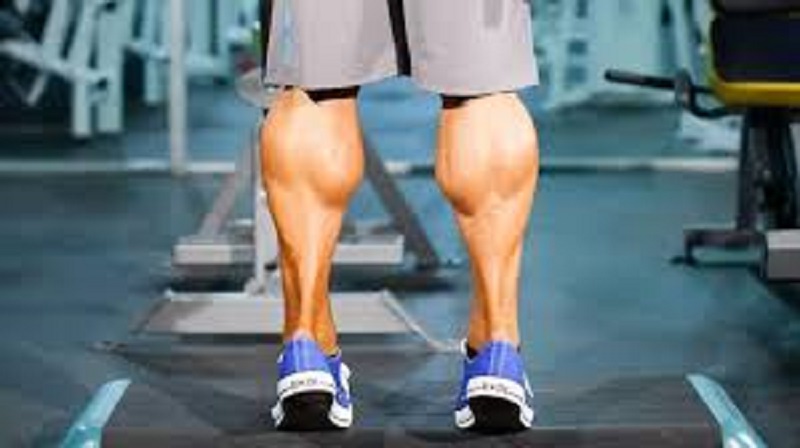Shin splints can stop runners in their tracks, turning each step into a painful reminder of the strain on their legs. The tibialis anterior muscle plays a key role in supporting our lower legs and preventing this common injury.
Our article provides easy-to-follow steps for the bodyweight tibialis raise, a move to strengthen your shins. “Keep running pain-free” is what you’ll learn here.
What is Tibialis Raise and How Can It Help Prevent Shin Splints?
Tibialis raises are exercises that make the tibialis anterior muscle in your leg stronger. This muscle is on the front of your shin and helps you lift your foot up. When this muscle gets stronger, it can stop you from getting shin splints.
Shin splints can hurt and happen when you run or jump a lot.
Doing tibialis raises is like giving armor to your shins. It makes them strong so they don’t get hurt easily. These exercises also help with knee problems and make running better for you.
They even help with balance and stopping quickly when playing sports. Your ankles will feel good too, because the exercise keeps them moving right without pain.
Different Types of Tibialis Raises: Body Weight, Dumbbell, and Band Assisted
Tibialis raises come in different styles to help make your shins strong. You can use just your body, add weights like dumbbells, or use bands for help.
- Bodyweight Tibialis Raise:
- Stand up straight and find something to hold onto for balance.
- Pull your toes up towards your shins as far as you can.
- Slowly lower them back down.
- This strengthens your shin muscles without needing extra equipment.
- Dumbbell Tibialis Raise:
- Sit with your legs out in front of you and place a dumbbell on top of your feet.
- Lift the weight by pulling toes towards you using only your foot and ankle muscles.
- Control the weight as you lower it back down.
- Adding a dumbbell increases resistance, making the shin muscles work harder.
- Band Assisted Tibialis Raise:
- Loop a band around a sturdy object and then around the top of your feet.
- Sit down with legs straight and pull toes towards shins against the band’s resistance.
- Return slowly to starting position after a good stretch.
- Bands provide adjustable resistance and can help with flexibility too.
Step by Step Guide on How to Perform Bodyweight Tibialis Raises
Assume a seated position with your legs extended in front of you and flex your ankles, raising your toes toward the sky while keeping your heels on the ground, then slowly lower them back down.
To learn how to perform this exercise correctly and prevent shin splints, keep reading!
Proper form and technique
To do bodyweight tibialis raises correctly, start by standing up straight with your back against a wall. Your feet should be about shoulder-width apart. Now lift the toes of both feet as high as you can, keeping your heels on the ground.
Make sure to go slow and control the movement. Hold it at the top for a second or two before lowering back down.
For this exercise, proper foot placement is key. Keep your toes pointing forward and try not to let them turn outwards or inwards as you lift them. Stand tall and do not lean forward; let your shin muscles do the work.
This helps strengthen those muscles and prevents pain from shin splints. Aim for smooth motions rather than quick jerks to make sure you are using your muscles fully without hurting yourself.
Recommended sets and reps
Once you’ve mastered the proper form and technique for bodyweight tibialis raises, it’s essential to understand the recommended sets and reps. For beginners, start with 2 sets of 10-15 repetitions.
As your strength improves, gradually increase to 3 sets of 15-20 reps. To challenge yourself further, consider adding ankle weights or resistance bands while maintaining proper form and avoiding any discomfort or pain.
It’s important to allow adequate rest between sets to prevent overexertion and promote muscle recovery.
As you progress in your tibialis raise routine, incorporating variations such as dumbbell or band-assisted tibialis raises can add diversity and effectively target the muscles from different angles.
Benefits of Tibialis Raises
Strengthening the shin muscles, improving balance and coordination, and stretching the tibialis anterior muscle are just some of the benefits of incorporating Tibialis Raises into your workout routine.
Interested in learning more about how this exercise can help prevent shin splints? Keep reading to find out!
Strengthening the shin muscles
Strengthening the muscles around your shins can play a vital role in preventing shin splints and reducing the risk of knee injuries. Research suggests that tibialis raises are effective in targeting these muscles, providing a simple yet powerful way to build strength in this area.
By engaging in regular tibialis raises, individuals can potentially enhance their running performance and decrease the likelihood of experiencing discomfort or pain associated with shin splints.
It’s essential to remember that strengthening exercises like tibialis raises don’t just benefit athletes; they’re beneficial for anyone looking to improve lower leg strength and prevent common lower leg injuries.
Improving balance and coordination
To improve balance and coordination, tibialis raises play a crucial role. Strengthening the tibialis anterior muscle through this exercise can enhance stability and coordination during physical activities like running or jumping.
Research suggests that a strong tibialis muscle can aid in improving overall lower body balance while also reducing the risk of ankle problems and pain, thereby contributing to better coordination during movement.
Additionally, performing tibialis raises with proper form and technique can help train the muscles involved in maintaining equilibrium. This exercise may also potentially lead to improved speed and vertical jump, further highlighting its significance in enhancing overall balance and coordination for various athletic endeavors.
Stretching the tibialis anterior muscle
Stretching the tibialis anterior muscle is crucial for maintaining lower leg flexibility and preventing injuries such as shin splints. This stretch helps in reducing tightness and increasing the range of motion in the front muscle of the shin, contributing to better overall lower leg strength.
By incorporating tibialis anterior stretches into your routine, you can improve ankle dorsiflexion, which is essential for movements like running and jumping. Research has shown that this type of stretching plays a vital role in easing pain associated with shin splints and enhancing overall flexibility.
Incorporating tibialis anterior stretches into your exercise regimen can significantly improve lower leg strength while also diminishing the risk of shin splints. It’s an integral part not only for athletic performance but also for injury prevention – making it a critical component of any comprehensive workout routine focused on lower body health and stability.
Important Precautions When Doing Tibialis Raises
Always remember to warm up and stretch properly before starting any exercise routine to avoid injury. Pay close attention to your body’s signals and stop immediately if you experience any pain or discomfort during the workout.
Proper warm-up and stretching
Ensure to start your workout with a proper warm-up, including light cardio and dynamic stretching exercises. This can help increase blood flow to the muscles, reduce the risk of injury, and prepare your body for exercise.
Additionally, focusing on stretching the calf muscles and tibialis anterior before performing tibialis raises can further help in preventing shin splints, improving flexibility, and enhancing the effectiveness of the exercise.
Also, incorporating ankle mobility exercises such as ankle circles or alphabet drills into your warm-up routine can help improve range of motion in the ankle joint, which is essential for proper dorsiflexion during tibialis raises.
Listening to your body
When doing tibialis raises, pay attention to how your body feels. You should feel a stretch in the front of your shin and not experience any pain during the exercise. If you feel discomfort or strain, stop immediately and reassess your form.
Adjust your position and ensure that you are performing the exercise correctly to prevent injury and maximize the benefits.
It’s crucial to tune into signals from your body while performing tibialis raises. The exercise should challenge you, but if you feel sharp pain or extreme discomfort, take a break or consult a fitness professional for guidance.
Other Exercises and Stretches for the Tibialis Anterior
Other exercises and stretches to strengthen the tibialis anterior muscles include:
- Toe Taps: While seated, tap your toes on the floor for 1-2 minutes at a time.
- Ankle Circles: Sit or lie down and rotate your ankles in clockwise and counterclockwise motions for 10 repetitions each.
- Resistance Band Dorsiflexion: Loop a resistance band around your foot and gently pull your foot towards you against the band’s resistance.
- Calf Stretches: Stand facing a wall, step one foot back, keep both heels flat on the floor and lean towards the wall to stretch your calf muscles.
- Towel Scrunches: Place a towel on the floor, use your toes to scrunch it towards you, and then push it away.
Conclusion: Tibialis Raises – A Simple Yet Powerful Exercise for Bulletproof Shins.
In conclusion, tibialis raises are a simple and powerful exercise for strong shins. Performing these exercises can help prevent shin splints and strengthen lower leg muscles. It’s an accessible exercise that can be done with just your body weight.
By incorporating tibialis raises into your workout routine, you can potentially reduce the risk of shin splints and other lower leg injuries while improving overall lower leg strength and stability.









